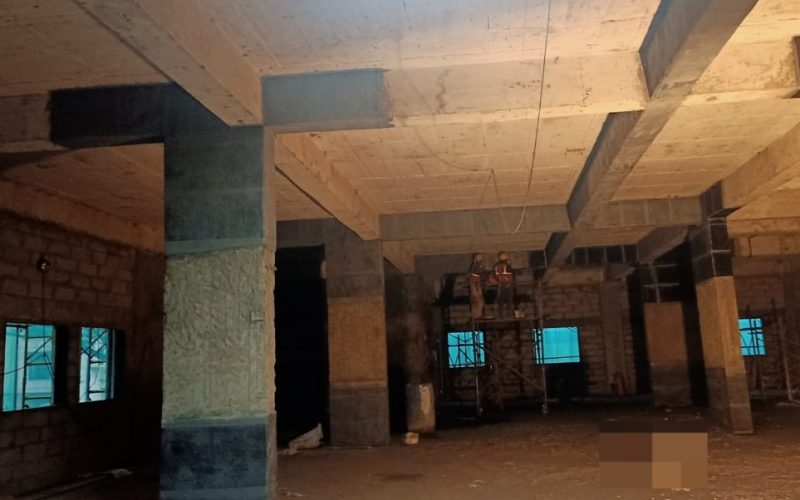Introduction
In the world of civil engineering, ensuring the safety and durability of buildings and infrastructure is a top priority. Over time, various structural elements begin to degrade due to natural wear and tear, environmental exposure, and increased loads. One critical aspect of reinforcing these elements is shear strengthening.
What is Shear Strengthening?
Shear strengthening is a structural rehabilitation method used to enhance the shear capacity of reinforced concrete (RC) members such as beams, columns, and slabs. Shear failure typically occurs when diagonal cracks appear due to excessive lateral loads. These cracks reduce the load-bearing capacity of a structure, posing a threat to safety.
To prevent such failures, engineers implement shear strengthening techniques to redistribute and absorb the shear stresses effectively.
Why is Shear Strengthening Necessary?
1. Ageing Structures
Many buildings in India are more than 30–40 years old and were constructed using outdated codes. Over time, their load-carrying capacity diminishes, requiring retrofitting solutions like shear strengthening.
2. Change in Usage
Buildings that were once residential may now be used for commercial or storage purposes, leading to an increase in load. This change often exceeds the original design loads, demanding structural upgrades.
3. Seismic Vulnerability
India falls in a seismically active zone. Structures that are not earthquake-resistant need additional reinforcement to prevent brittle failure during seismic events. Shear strengthening adds lateral resistance, improving earthquake performance.
4. Design or Construction Errors
Faulty construction practices, inadequate reinforcement, or poor quality control during the initial build can cause shear deficiencies, which are correctable with strengthening techniques.
Common Techniques for Shear Strengthening
1. Steel Plate Bonding
This method involves bonding steel plates to the tension or shear face of RC members using epoxy. It increases the load capacity and ductility of the structure.
2. Fiber-Reinforced Polymer (FRP) Wrapping
FRP is one of the most widely adopted modern solutions. These are lightweight, high-strength materials made from carbon, glass, or aramid fibers. Wrapping RC beams or columns with FRP sheets significantly improves their shear capacity and resists cracking.
3. RC Jacketing
Reinforced concrete jacketing increases the cross-sectional area and improves both shear and flexural strength. It’s a traditional but highly effective technique, especially for columns and beams.
4. Shotcreting
Involves spraying a layer of high-velocity concrete over the surface after adding additional reinforcement. It helps restore both the strength and appearance of deteriorated components.
5. Stirrup Addition
In this method, additional stirrups (closed loop reinforcement) are added externally or internally to improve the shear strength. It is often done during major retrofitting operations.
Advantages of Shear Strengthening
1. Improved Safety
It significantly reduces the risk of structural collapse, especially during earthquakes or heavy loading conditions.
2. Extended Life
Strengthening adds years to the life of structures, delaying the need for complete reconstruction.
3. Cost-Efficient
Compared to demolition and rebuilding, shear strengthening is a far more economical solution.
4. Minimal Disruption
Most techniques, especially those involving FRP or plate bonding, are quick to install and cause minimal disturbance to ongoing operations.
Shear Strengthening in Indian Construction
The Indian construction industry faces a unique challenge managing older buildings while accommodating new loads and uses. Schools, hospitals, flyovers, railway platforms, and residential societies often undergo changes that make them structurally vulnerable. With cities expanding rapidly, structures built decades ago are now supporting increased traffic and usage. Shear strengthening has become a crucial tool for engineers and contractors to meet these demands without disrupting urban life.
Key Considerations Before Implementation
1. Structural Assessment
A detailed structural audit must be carried out to assess the current shear strength, condition of the materials, and potential risk areas.
2. Material Compatibility
The selected strengthening material should be compatible with existing materials to avoid delamination or failure.
3. Durability
Materials used for strengthening should resist corrosion, temperature variations, and environmental stressors.
4. Load Analysis
Engineers must re-evaluate the loads, especially if usage has changed, to choose an appropriate strengthening method.
Future of Shear Strengthening in India
As urban infrastructure continues to age and evolve, the role of shear strengthening will only grow. Research is ongoing to develop even more efficient materials and techniques. Nanotechnology, AI-based structural health monitoring, and hybrid composites are expected to play a significant role in the future. Moreover, growing awareness among property owners, builders, and government agencies is increasing the demand for structural retrofitting services. This not only helps protect lives but also conserves resources by avoiding demolition and reconstruction.
Shear strengthening is not just a technical upgrade it’s a life-saving intervention. Whether it’s an ageing bridge, a school building, or a busy hospital, enhancing shear resistance ensures that structures remain safe, functional, and compliant with current standards .Engineers must re-evaluate the loads, especially if usage has changed, to choose an appropriate strengthening method. In India’s fast-changing urban landscape, where every square foot of construction carries significant social and economic value, investing in shear strengthening is a wise and essential move. With innovative methods and the right engineering expertise, existing structures can be fortified to meet the demands of tomorrow.
Conclusion
Shear strengthening may not be something we think about every day, but it plays a vital role in making sure our homes, schools, and workplaces are safe. By reinforcing buildings to resist sliding and cracking forces, we help protect lives and property.
Whether it’s through wraps, braces, or steel plates, these techniques make a big difference. As our cities grow and buildings age, investing in shear strengthening is a smart step toward a safer, stronger future.












